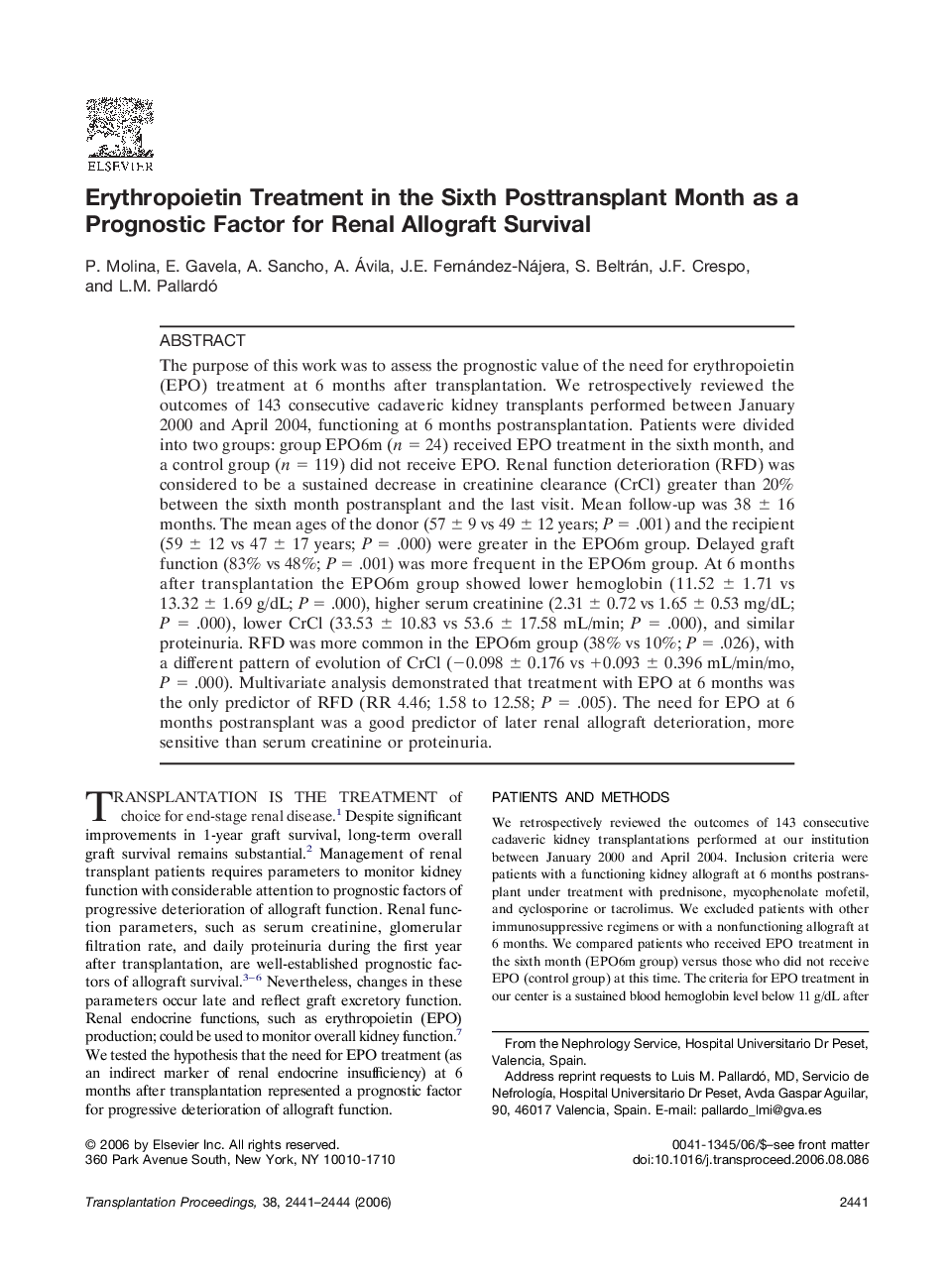| Article ID | Journal | Published Year | Pages | File Type |
|---|---|---|---|---|
| 4261509 | Transplantation Proceedings | 2006 | 4 Pages |
Abstract
The purpose of this work was to assess the prognostic value of the need for erythropoietin (EPO) treatment at 6 months after transplantation. We retrospectively reviewed the outcomes of 143 consecutive cadaveric kidney transplants performed between January 2000 and April 2004, functioning at 6 months postransplantation. Patients were divided into two groups: group EPO6m (n = 24) received EPO treatment in the sixth month, and a control group (n = 119) did not receive EPO. Renal function deterioration (RFD) was considered to be a sustained decrease in creatinine clearance (CrCl) greater than 20% between the sixth month postransplant and the last visit. Mean follow-up was 38 ± 16 months. The mean ages of the donor (57 ± 9 vs 49 ± 12 years; P = .001) and the recipient (59 ± 12 vs 47 ± 17 years; P = .000) were greater in the EPO6m group. Delayed graft function (83% vs 48%; P = .001) was more frequent in the EPO6m group. At 6 months after transplantation the EPO6m group showed lower hemoglobin (11.52 ± 1.71 vs 13.32 ± 1.69 g/dL; P = .000), higher serum creatinine (2.31 ± 0.72 vs 1.65 ± 0.53 mg/dL; P = .000), lower CrCl (33.53 ± 10.83 vs 53.6 ± 17.58 mL/min; P = .000), and similar proteinuria. RFD was more common in the EPO6m group (38% vs 10%; P = .026), with a different pattern of evolution of CrCl (â0.098 ± 0.176 vs +0.093 ± 0.396 mL/min/mo, P = .000). Multivariate analysis demonstrated that treatment with EPO at 6 months was the only predictor of RFD (RR 4.46; 1.58 to 12.58; P = .005). The need for EPO at 6 months postransplant was a good predictor of later renal allograft deterioration, more sensitive than serum creatinine or proteinuria.
Related Topics
Health Sciences
Medicine and Dentistry
Surgery
Authors
P. Molina, E. Gavela, A. Sancho, A. Ávila, J.E. Fernández-Nájera, S. Beltrán, J.F. Crespo, L.M. Pallardó,
